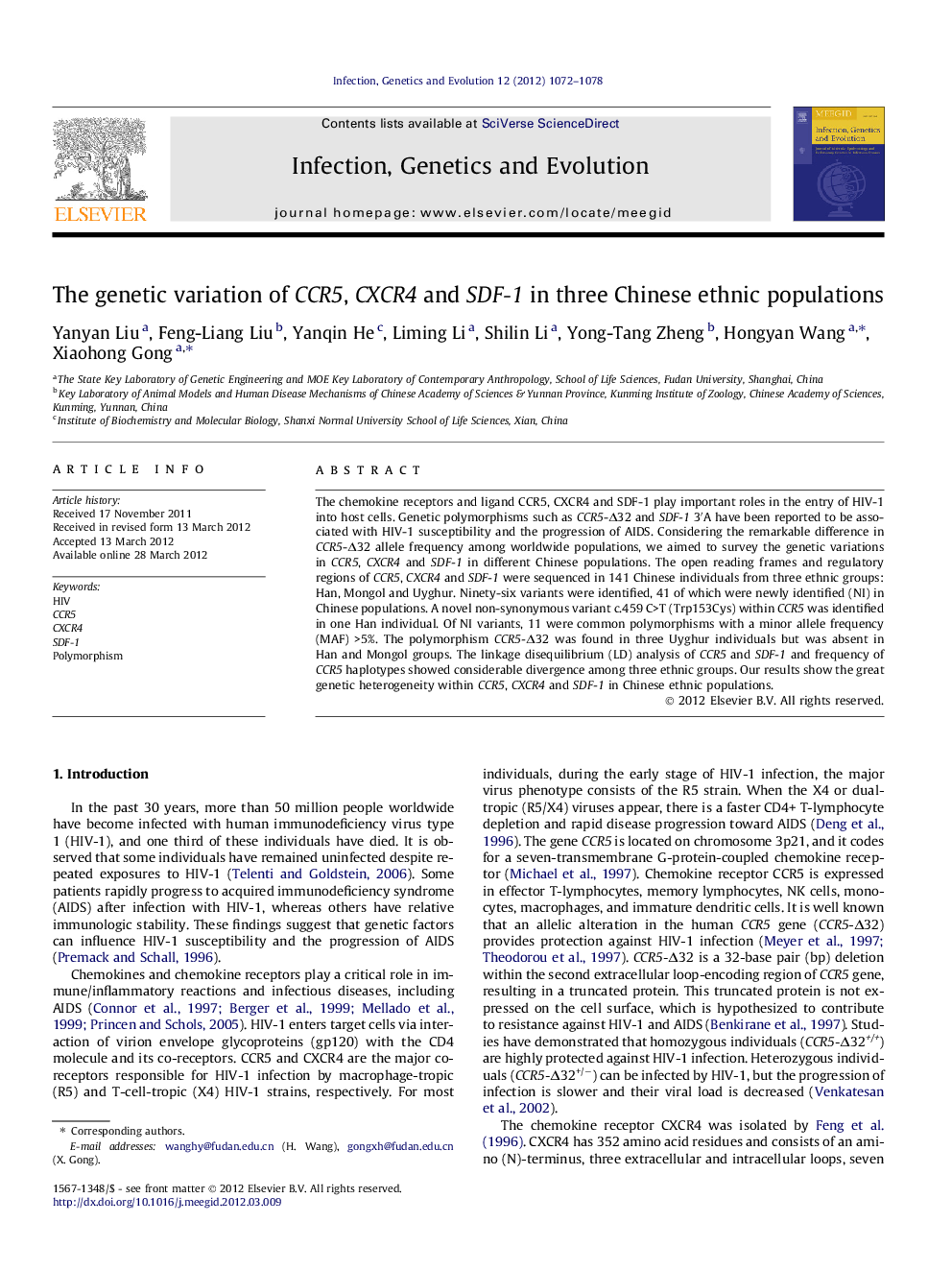| کد مقاله | کد نشریه | سال انتشار | مقاله انگلیسی | نسخه تمام متن |
|---|---|---|---|---|
| 5911221 | 1161361 | 2012 | 7 صفحه PDF | دانلود رایگان |

The chemokine receptors and ligand CCR5, CXCR4 and SDF-1 play important roles in the entry of HIV-1 into host cells. Genetic polymorphisms such as CCR5-Î32 and SDF-1 3â²A have been reported to be associated with HIV-1 susceptibility and the progression of AIDS. Considering the remarkable difference in CCR5-Î32 allele frequency among worldwide populations, we aimed to survey the genetic variations in CCR5, CXCR4 and SDF-1 in different Chinese populations. The open reading frames and regulatory regions of CCR5, CXCR4 and SDF-1 were sequenced in 141 Chinese individuals from three ethnic groups: Han, Mongol and Uyghur. Ninety-six variants were identified, 41 of which were newly identified (NI) in Chinese populations. A novel non-synonymous variant c.459 C>T (Trp153Cys) within CCR5 was identified in one Han individual. Of NI variants, 11 were common polymorphisms with a minor allele frequency (MAF) >5%. The polymorphism CCR5-Î32 was found in three Uyghur individuals but was absent in Han and Mongol groups. The linkage disequilibrium (LD) analysis of CCR5 and SDF-1 and frequency of CCR5 haplotypes showed considerable divergence among three ethnic groups. Our results show the great genetic heterogeneity within CCR5, CXCR4 and SDF-1 in Chinese ethnic populations.
⺠The genes CCR5, CXCR4 and SDF-1 were sequenced in three Chinese ethnic populations. ⺠We identified 96 variants, of which 41 were novel. ⺠Considerable genetic divergence of three genes was found among three ethnic groups.
Journal: Infection, Genetics and Evolution - Volume 12, Issue 5, July 2012, Pages 1072-1078